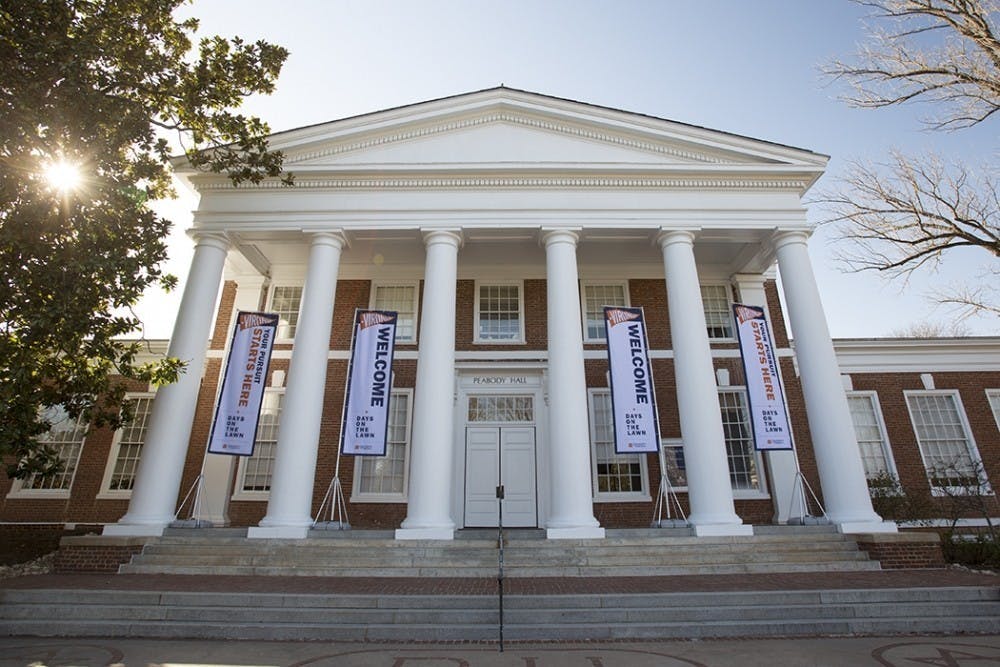The 3,925 students enrolling in the Class of 2023 comprise the academically strongest and most diverse class in the history of the University, according to Dean of Admissions Gregory Roberts. Compared to the statistics from the Class of 2022, the new class features an increase in minority, first-generation and low-income populations. Though the school overenrolled above its target of 3,750, the incoming class fell one percent short of its in-state target, with 66 percent of students coming from the Commonwealth.
Though the official statistics are not released until after the fall semester begins, Roberts said in an interview with The Cavalier Daily that the current statistics are largely representative of the incoming class — it’s anticipated that 55 to 65 students will take gap years or pursue other options that would postpone their enrollment.
The Class of 2023 includes 35 percent minority students, an increase from the 34 percent in the Class of 2022. In particular, the African American population has increased from 6.5 percent to 6.8 percent — however, the portion of incoming students claiming at least one of their races is African American has decreased from 9.2 percent to 9 percent.
According to Roberts, the minority population of the Class of 2023 reaches roughly 40 percent with the inclusion of international students in the statistic.
The incoming class is also more economically diverse, featuring an increase in the low-income population from 7.7 percent to 8.4 percent over the Class of 2022. The first-generation student population has also increased, growing from 11 percent to 13 percent between the two classes.
Incoming first-year student, Astha Kulshrestha said diversity was definitely something she considered upon choosing a college, although she said it wasn’t at the top of her list.
“It’s a great thing that it’s a really diverse class. My previous school was really diverse too, so I know the value of it, and I know that I want to continue meeting new people from different places,” Kulshrestha said. “I needed the school that I considered to be diverse. It was a consideration but it wasn’t the most important thing for me.”
Roberts described the Office of Admissions’ efforts to build relationships between the University and prospective students, a process which begins far before the offer and enrollment deadlines each spring. In addition to reaching out to many students as early as their sophomore year in high school, the Office has made special efforts — such as outreach programs to students in the Appalachian region — to increase racial and socioeconomic diversity in recent years.
“Often with underserved students, underrepresented students, we have special programming, open houses, financial aid workshops,” Roberts said. “We partner with a lot of community-based organizations — we recruit at churches, synagogues, youth groups and things like that — locally, and in the state in particular. So we try to cast a pretty broad net, so that we can attract, and ultimately offer to and enroll, talented and deserving students of all backgrounds, but I think we had a lot of success increasing racial and economic diversity and first-gen diversity in the past couple of years.”
In addition to overall improvements in diversity, the Class of 2023 boasts an increase in mean SAT score from last year’s 1397 to 1406. 90.3 percent of enrolling students were also in the top 10 percent of their graduating class.
The admissions process this year also entailed fewer offers to legacy students, but a higher number of enrollees. While legacy offers dropped from 1,072 for the Class of 2022 to 1,014, legacy enrollments increased from 594 to 602 students.
Competitive academics and a record-breaking pool of 40,869 applicants decreased the University’s admissions offer rate to an all time low of roughly 24 percent. Roberts noted that, though area of academic interest is largely disregarded, certain fields have seen more attention from students as application numbers continue to increase.
“We don’t look at [majors] very much,” Roberts said. “However, I would say that in the past several years, the interest in Engineering has increased pretty dramatically, and I would also say that Computer Science has increased pretty dramatically. Now, I think that’s a national trend too. But those have seen more interest. Frankly, we’ve seen more interest in Nursing too.”
Overall, Roberts expressed his appreciation for the class and the work of the Office of Admissions through the process of completing the Class of 2023.
“I think that mainly, we are very proud of this class,” Roberts said. “This was a challenging year for our team given the large application volume, but we consider it a great honor to get a glimpse of students lives, and to be responsible for shaping a class that will shape the University for years to come. It’s far more than a bunch of numbers to us, of course, it’s getting to know the students as best we can through their applications, and it’s inspiring. We have some pretty extraordinary students here.”







